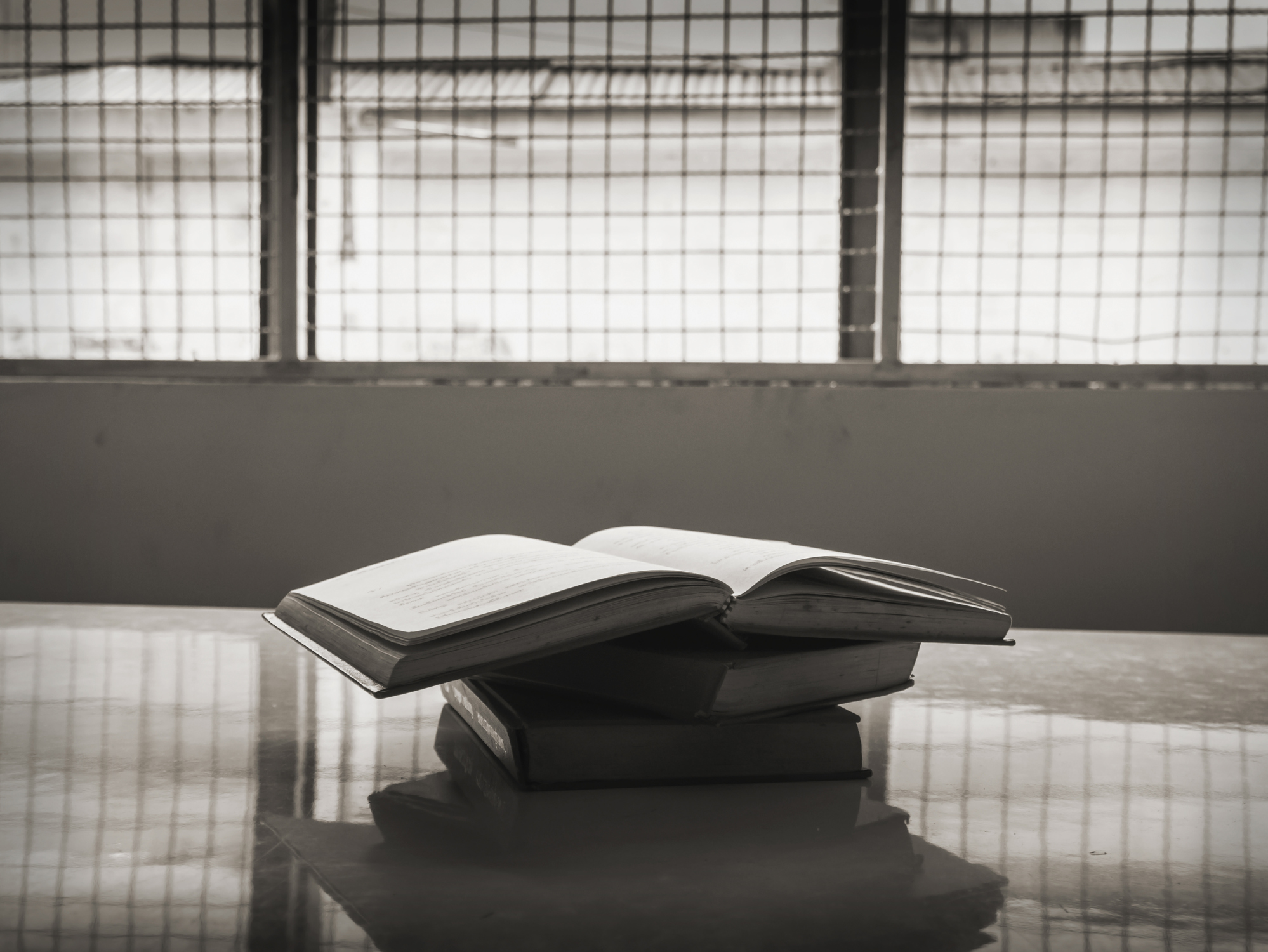
On July 22, 2022 Texas prison authorities banned the second edition of Merriam-Webster’s Visual Dictionary, purportedly because there was an image of a weapon. This banned title was added to the 10,265 others that incarcerated people can’t read in Texas prisons.
Unfortunately, dictionaries aren’t the only kind of books banned by Texas corrections officials and their counterparts throughout the United States. As PEN America’s new report Reading Between the Bars shows, books banned in prisons by some states dwarf all other book censorship in school and public libraries.
Prison censorship is rising steeply, robbing those behind bars of reading materials on everything from exercise and health to art and even yoga, often for reasons that strain credulity. One prime example of this is Clifton Collins, Jr. and Gustavo “Goose” Alvarez’s cookbook Prison Ramen, which is the most banned book in America and banned in 19 state prison systems. This cookbook contains stories before each recipe about the way the recipe was developed or a particularly meaningful time it was prepared and eaten. These stories detail what life is like inside and literature that affirms the realities of incarceration are widely censored. Similarly, Robert Greene’s The 48 Laws of Power is the second most banned book in prisons. It’s a self-help book that explains power dynamics at play in interpersonal relationships and offers advice for how to manage them. The reason cited for the book's ban is, "manipulation techniques." Florida’s Department of Corrections has banned 11 of Greene's books. Another book widely banned in prisons is The Art of War, a text written in 5th century BCE by Chinese philosopher Sun Tzu, commonly banned for security concerns.
According to PEN America’s research, Florida ranks first in banning books in prisons, with 22,825 books banned (through this year). Kansas has censored 7,669 titles (up to 2021); Virginia 7,204 (up to 2022) and New York 5,356 (up to 2019). The ban on visual dictionaries is especially cruel, given they are designed to help people with basic or no literacy. Sixty percent of the U.S. prison population, roughly 720,000 people, are functionally illiterate. Learning to read from the dictionary is a time-honored tradition and dictionaries are the most sought books by incarcerated people. Malcolm X in his autobiography famously wrote about learning how to read from a dictionary while in prison. “I saw that the best thing I could do was get hold of a dictionary-to-study, to learn some words,” he explained. “I could for the first time pick up a book and read and now begin to understand what the book was saying. Anyone who has read a great deal can imagine the new world that opened.”
Read More: The Extreme New Tactic in the Crusade to Ban Books
People who are functionally illiterate may be able to pronounce words as they read them on the page. They can sign their names to documents and they can read street signs or simple sentences. They can often read whole paragraphs but ask them what they just read and they won’t be able to tell you. Practice makes people better readers. The more your brain processes language, the faster you can process meaning, which is all the more reason for prisons to make books more widely and easily available.
The censorship becomes even more unfathomable when we consider how this process occurs. Books are banned in prisons by mailroom staff, tasked with skimming them and deciding which ones can be allowed or not. Fifty-four percent of American adults read below a sixth-grade level. Employment at correctional facilities requires a high school diploma which one third of employees have while an additional quarter have an associate degree. This means that staff empowered to censor books may have only basic literacy themselves.
More From TIME
Prisons are also targeting the written word by increasingly limiting access to any print literature. Missouri is the most recent state to begin censoring through a so-called “approved vendors only” policy that requires incarcerated people to purchase literature from a small list of businesses. This literally means incarcerated people in Missouri cannot receive books as gifts from family, a church, or a nonprofit. Policies like this have proliferated in recent years and severely limit how incarcerated people can access literature. Michigan, for example, has only five businesses where someone inside can purchase a book from.
Prison authorities cite the introduction of drugs into prisons through paper mail as the rationale for these policies, alleging that independent bookstores, publishers, and literacy nonprofits are either complicit in (and potentially even initiating) illicit drug smuggling. Incredibly, however, Departments of Corrections have so far not provided substantial and sustained evidence that the primary conduit of drugs into prisons. Most evidence actually points to staff as the primary conduit of contraband into carceral facilities. And yet, much more effort, time, and money is being devoted to censoring reading materials.
Censorship is oppressive and even leads to a decline in mental health. Martin Lizarragar, who is incarcerated in California, said that this type of oppression has not only hurt himself, but also his family and community. “It has even, on one occasion, broke me down to tears,” Lizarragar told PEN America. “This just isn't right.”
We are right to ask whether the underlying rationale is aimed at foreclosing community, restricting potential interactions, and denying that incarcerated people are still members of society whose voices should be heard and merit access to information as we all do.
More Must-Reads from TIME
- Cybersecurity Experts Are Sounding the Alarm on DOGE
- Meet the 2025 Women of the Year
- The Harsh Truth About Disability Inclusion
- Why Do More Young Adults Have Cancer?
- Colman Domingo Leads With Radical Love
- How to Get Better at Doing Things Alone
- Michelle Zauner Stares Down the Darkness
Contact us at letters@time.com